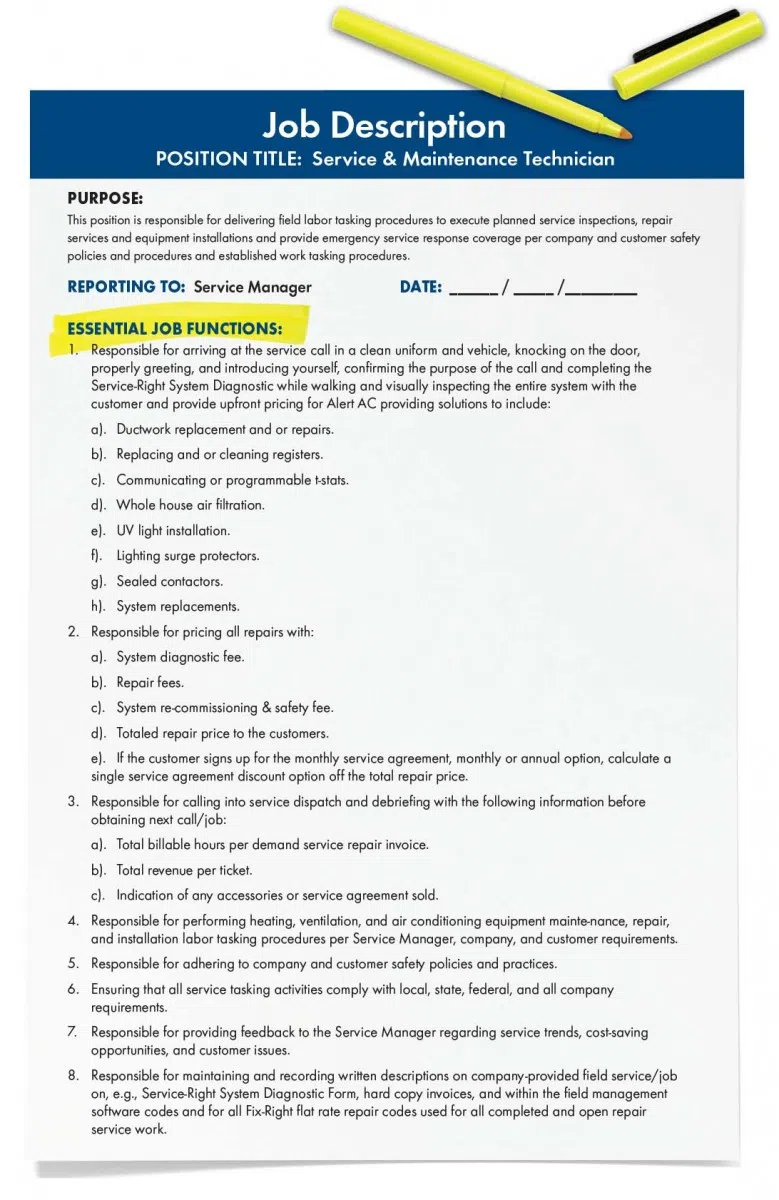This is the third installment of a six-part series designed to be a complete A-Z on how to sell and organize for commercial service agreements. The Selling Commercial Service Agreements series includes the following topics:
- Preparing for service agreement surveys
- Equipment and system surveying and data gathering
- Profitable pricing strategies to win the business
- Proposal writing strategies
- Hiring and compensating sales service sales reps
- Organizing for service agreements
Part III: Profitable Pricing Strategies to Win the Business
The main objective when pricing service agreements is to determine where the prospect is relative to price compared with the competition’s pricing and quality of delivery. Following are the three pricing situations and strategies into which all commercial sales situations fall.
Situation 1
You have no competition due to:
- An add-on to an existing agreement.
- An uninformed buyer.
- The buyer’s response requirements.
- A lock on skilled labor in the area.
- A proprietary product- support offering.
Strategies:
- Use normal pricing.
- Offer the highest-priced value-added program.
Situation 2
You are up against good competition due to:
- Your prospect can’t find any defects in the competitor’s business delivery.
- The competition’s street labor rate is below your rate.
Strategies:
- Price conservatively.
- Do not go “head-to-head,” but pro- vide options to attempt to change program scope.
- Develop your program costs by using the least-possible-cost labor.
Situation 3
You are up against weak competition due to:
- Your prospect finds many defects in some or all aspects of the competi- tor’s business delivery.
- The competition’s street labor rate is at or below your street labor rate.
Strategies:
- Use your normal pricing.
- Provide options that result in higher- priced value-added programs selling “top-down.”
Gathering Data to Develop an Estimate
Once you have determined which strategy to use, you need to gather ad-ditional scope-of-work and company- pricing information in order to calculate the right price. The following is needed to develop profitable estimates:
- The distance from point of labor dispatch to job location.
- A list of HVACR equipment at the facility, including quantity, size, and location of each piece.
- The scope of work for each piece of equipment.
- Any difficult facility- or equipment- access requirements for each piece of equipment.
- Maintenance-labor cost rates.
- Daily labor-productivity factor based on non-chargeable time.
- Truck and travel costs.
- Cost markup or gross profit margin rates.
- Equipment, labor, and material estimating tables.
- Component-repair-and-replace liability adjustment factors forfull labor or full service agreements only.
In Part II, you learned how to conduct an on-site survey using the Customer and Facility/Equipment Survey Forms to collect item Nos. 1 through 4.
Following, I provide formulas to identify item Nos. 5 through 7, your maintenance-labor costs by category, daily labor-productivity factors, and truck/travel rates.
Most contractors use a cost-based service-agreement estimate: their cost plus mark-up or gross profit margin added to the entire service agreement cost. I use a different process.
Some contractors use fully burdened labor costs that include non-chargeable time and other overhead, truck charges, travel, benefits, and insurance. Other contractors use direct labor costs only and capture overhead and burden in their margins. I recommend that you use direct labor costs, which include benefits and insurance only, to estimate the actual labor costs; and then escalate all agreement hours by the average or known productivity factor for a specific agreement.
Labor-Productivity Factor
The amount of time it takes to service equipment is easily found from the equipment manufacturer or from widely accepted HVAC estimating programs such as Building Services Institute’s AccuPro. However, even though you are told it takes one hour to properly tune and maintain a 10-ton packaged rooftop unit, you can’t estimate costs based on one hour to do the job. You need to add time to get the technician there and for normal workday breaks. Most technicians are productive for only seven hours, even if they do not leave the shop — due to breaks and mobilization as illustrated later in this article.
Naturally, you also have to subtract travel to get to the job. If you do not in- clude nonproductive hours in your labor- cost rate, then you should calculate how many hours your technicians are productive in an eight-hour day. For example: (8 – normal-area travel, breaks and lunch = 6.5 hours). Therefore, taking this difference and dividing it into eight available hours per day and then adding one will produce your productivity-factor multiplier. The productivity-factor would then be used to multiple or escalate all hours in a service agreement to more accurately estimate your non-chargeable labor hours per day. This calculation is illustrated here.
If you require six hours for 10 packaged-rooftop-unit-tuning inspections, you would need to multiply the 10 units X 1 hour tuning labor X 1.23 = 12.3 hours due to daily non-productive hours.
Calculating Truck and Travel Costs
Most contractors use a per-trip charge for time and material work. These tend to be average per-trip labor and truck costs within their territories. Some use this method while using zones for different distances from the home office (e.g., 15miles from office is Zone A and = 1⁄2 hour round-trip plus truck charge = $38 cost charge). This per-trip method works well when the maintenance technician is not at the location for very long. However, when estimating agreements using this method for service agreements — where the technician will be dispatched for inspections over a several-day period — using an average per-trip charge may result in over-inflated truck costs versusa competitor that uses a true-cost method as shown on page 26.
There are two data points that need to be calculated: the number of trips to complete an inspection, and the service truck and travel costs. The number of trips to a specific job is usually the same as the frequency of inspections unless the tasking requirements for an inspection consume more than eight hours per day.
When the hours are more than eight, the total time must be divided by eight to get the number of trips required to complete the inspections. For example, 32 total inspection hours/8 hours per day = 4 trips). The true-cost method uses an actual per-hour truck cost to capture fixed truck costs and a per-mile cost to capture the variable fuel and maintenance costs. To calculate the hourly truck and the per- mile fuel and maintenance costs, you can use this model:
Use your own truck costs if known, or use the above truck costs. AccuPro esti- mating program provides either method of calculating truck and travel costs. All you need to do is to select which method you prefer and then enter your charges or mileage cost in the appropriate category.
Gross Profit Margin Versus Markup
Most contractors use the gross-profit- margin (gpm) pricing method (e.g., 50% gross profit margin, which is equal to cost plus 100%). The pricing calcula- tion using gross profit margin is shown below.
Multi-Year Price Escalation Rate
Today contractors typically offer service agreements in three-to-five-year terms to lock in clients for longer periods and on renewals to increase service- base retention. Our AccuPro estimating program produces an annual price for each of the five years. All you need to do is enter the escalation rate for years two through five.





